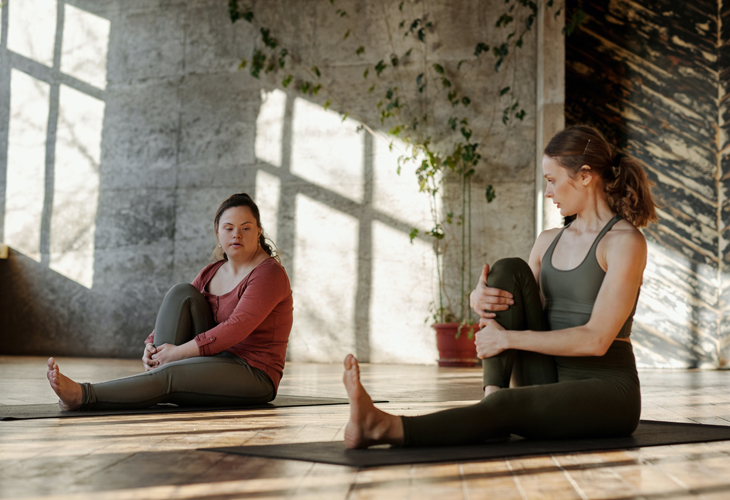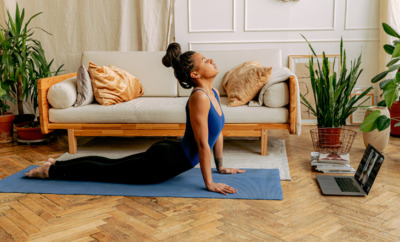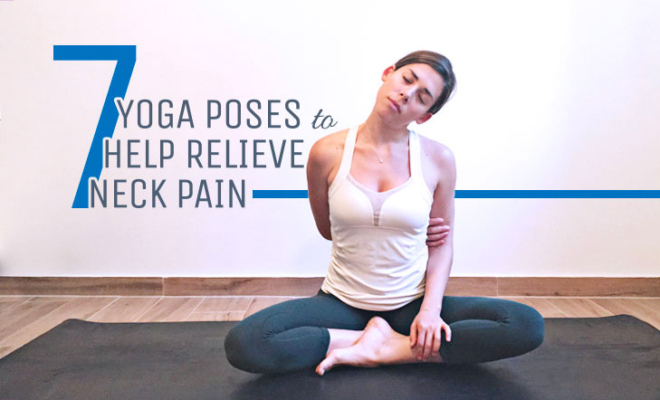Functional Range Conditioning Benefits (Plus 2 Exercises to Try)

Functional Range Conditioning (FRC) is a game changer. In over a decade of coaching, I have found that nearly every single client requires some form of articular rotation to either help decrease current joint pain or prevent the likelihood that they will experience joint pain in the future.
FRC helps you to become more aware of your body and allows you to complete linear movements with ease. It was developed by movement specialist Dr. Andreo Spina as a mobility training system created to improve joint health.
What Exactly Is Functional Range Conditioning (FRC) and Who Is It For?
Functional Range Conditioning is based on scientific principles and research in order to expand active, usable range of motion.
The main benefit of training your body’s functional range is the impact on your joint’s overall health, which is beneficial for everyone, not just pro athletes.
Any joint pain will be reduced, and the risk of developing joint issues in the long haul will become significantly lower. Additionally, your mobility will increase which will – in turn – enhance your workout performance.
Think of FRC training like flossing for your joints.
Think of FRC training like flossing for your joints. Regularly flossing your teeth prevents junk build up, and improves the overall health of your teeth as a result. The same goes for your joints.
As a coach, I’ll often hear clients insist that they won’t be able to participate in Functional Range Conditioning training because they’re not flexible enough . . . but it isn’t about being flexible! It’s about pushing the ranges of motion and exploring new ways to control movement, which can often result in enhanced flexibility.
Considered about your flexibility? Get the Full Scoop on Fascia, the Saran Wrap For Your Muscles That Can Make Or Break Your Range of Motion
Both mobility and flexibility are important areas to develop if you’re looking to enhance your workout routine, or improve joint health and function. FRC works on controlling different ranges of motion, which is essentially training your mobility.
Here Are 3 Different Types of Functional Range Conditioning Exercises:

Let’s explore the different types of FRC exercises to train your mobility in more detail.
1. PAILs
PAILs is short for progressive angular isometric loading.
Your body will respond to the progressing movement of these exercises by allowing you to gain more function over time – in a similar way to how weight training increases muscle gain over time.
Isometric loading is key to PAILs, so it’s important to understand exactly what it means.
An isometric contraction is the name for using your muscles without actually moving your body – you could do this right now as you’re reading this. Think about an area of your body and try to contract those muscles without moving.
Progressive refers to which muscle groups you’re targeting. In PAILs, you’re targeting the muscles that are being lengthened within your movement.
2. RAILs
RAILs stands for regressive isometric angular loading.
Again, your body will respond to the progressing movement of RAIL exercises by allowing you to gain more function over time.
And again, isometric loading is key to RAILs. Remember isometric loading is when you activate a muscle without changing its length – like when you “hug muscle to bone.”
Regressive refers to which muscle groups you’re targeting. In RAILs, you’re targeting the muscles that are being shortened.
3. CARs
CARs stands for controlled articular rotation.
CARs teach articular adaptation, outer range control, and kinesthetic awareness. With CARs, you’ll learn to control the ranges of motion that you gain through PAILs and RAILs.
When practicing CARs, you’ll need to engage in muscle irradiation, which is a technique often used for lifting weights.
It’s a method of creating tension throughout your body, helping to engage more muscles. As you complete repetitions of CARs, you’ll irradiate at a higher percentage each time you go through the motions, causing you to really think about the movement you are completing.
Here Are 2 Examples of Functional Range Conditioning Exercises:
These are both examples of CARs exercises from FRC.
1. Neck CARs
As you do this exercise, make sure you don’t move your body with the motions, remain stable and focus only on moving your head and neck. This can be done as a stand alone exercise or as part of a warm-up routine.
Let’s try it:
- Bring your chin down to your collarbone, stretching out your neck as much as you can
- Swing your chin up to the left, trying to reach it up to the ceiling
- Then bring your left ear back to your left back pocket
- Draw a line on the ceiling with your chin, keeping your teeth clenched as much as possible and keeping everything else in line and stable in your body
- Bring your right ear to your right back pocket
- Then bring your chin down to your shoulder
- Scrape your chin down along your collarbone
- Move back up to the center ready to reset
- Irradiate 30% then repeat the motions, going in the opposite direction
- Do this two to three times
2. Knee CARs
Working on the rotation of your tibia (shin bone) is good for your knees and the overall joint health.
10 Yoga Poses to Strengthen Your Knees and Prevent Injury
Make sure that your hip does not follow your rotation movements as you move through this exercise. Keep as stable as possible while completing the motion – irradiation will help with this.
Let’s try it:
- Start in a seated position, with your legs out in front of you and your knees bent
- Wrap your left arm underneath your left leg, and place your right hand on top of your knee
- Irradiate at 30%
- Then rotate your left foot internally, pushing as far as you can while remaining stable
- Extend your knee, while holding on to the internal rotation
- At the top of the extension, externally rotate your foot
- Then slowly lower your leg while maintaining the external rotation
- Hold the external rotation and then extend your leg back up to the top
- Internally rotate your foot again, before lowering your leg back to the floor
- Repeat with your other leg
Functional Range Conditioning (FRC): The Takeaway
If you’re looking to explore Functional Range Conditioning for the first time, speak with a fitness coach or personal trainer for guidance and advice to incorporate this modality into your training regimen.


This Month's Letter
From the Editor
Monthly motivation and food for
thought from our founder.




























Comments